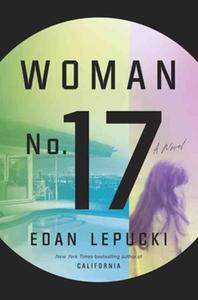
 Woman No. 17, Edan Lepucki's follow-up to her breakout post-apocalyptic novel California, is as mysterious and unpredictable as its troubled protagonists, the unusually named Lady Daniels and S.
Woman No. 17, Edan Lepucki's follow-up to her breakout post-apocalyptic novel California, is as mysterious and unpredictable as its troubled protagonists, the unusually named Lady Daniels and S.Lady has decided to separate from her husband. She needs a live-in nanny to take care of her young son, Devin, while she writes a parenting memoir about raising her teenage son, Seth. Seth is nonverbal, a fact that Lady usually follows up with a scripted series of rhetorical questions: "Is he autistic? No. Is that what you were going to ask? He's also not deaf.... And he isn't a genius either." S.--shortened from Esther--immediately impresses Lady with her self-confidence, and before long S. is living in a small building by the pool that she calls "the Cottage."
Woman No. 17 liberally borrows the tropes of noir thrillers while remaining something more difficult to define. Instead of violence and criminal intrigue, Lepucki is concerned with psychological drama and exploring questions of motherhood and art. Her characters are never what they appear to be, and much of the novel's suspense comes from the way it burrows further into each character's psyche and past first impressions, and into their complicated inner lives. Lady's aloof, fashionable exterior hides a wickedly dark--almost fatalistic--sense of humor: "Being female is a lifelong lesson that starts with how to wipe (front to back), and ends only with death, graceless always." Chapters from her perspective frequently drift into her poverty-stricken past and unhealthy personal relationships.
S. can relate--she and Lady bond over memories of their damaged mothers. What Lady doesn't know, however, is that S. is a punishingly committed artist in the midst of an unusual art project: she's trying to become her mother. The self-assured, impulsive, hard-drinking S. is a character, an imitation of her mother's chaotic approach to life. Her art has real-world consequences, though, setting off ripples in Lady's family that threaten to tear them apart.
Woman No. 17 works because the women it focuses on are so fascinating, each with a distinctive voice and differing interpretations of the same events. Even supporting characters like Seth come with plenty of layers to peel away and room to guess at their motivations. The revelations that come feel less like twists than new insights into each person's behavior. For example, it's revealed early on that the title is a reference to a famous photograph of Lady. The photographer is one of S.'s idols, but the portrait itself is almost too intimate: "Her stomach sagged over the waistband. The stocking seam was like a scar bisecting the lower half of her torso." Lady hates the photo, but is it because it's exploitative or is it because it says something true about her? As is the case with much of Woman No. 17, it depends on the interpretation. The questions Lepucki poses don't have easy answers; they'll linger in the reader's mind until well after the conclusion. --Hank Stephenson, bookseller, Flyleaf Books, Chapel Hill, N.C.
Shelf Talker: Woman No. 17 is a brilliant follow-up to California and a twisty, emotionally complicated noir about art, motherhood and mysteries without any easy answers.

